Long-Form Content Writing Basics

Content comes in all forms on the Web - there are infographics, and videos, interactive charts and presentations, as well as short form blog posts and long form, in-depth articles.
While the type of content that enterprises and individuals choose to develop will depend on a variety of factors - none more important than the user and their state in the buying cycle - those that spend the time and resources developing long-form, in-depth content tend to have better performance over time from their efforts (mostly in relation to attributed revenue and visitor engagement).So how do you develop long-form content? Keep reading...
Most people cringe at the thought of writing anything, and avoid developing content that is in-depth at all cost. It's not really that difficult however; you just need a little more time and a lot more planning.Let's take a look at a few "high-level" considerations as you set out on a long-form content development practice.

TOPIC FOCUS
First and foremost, keep in mind that long-form content is most effective when (and should be used exclusively for) those topics that you have a lot to say about.
If you can't go "on and on" about a topic, if you're not genuinely passionate about the subject matter, or at least curious about it, it is likely not a long form content asset you should personally produce.
Forcing yourself to do anything, particularly write about a specific topic, often results in a low quality finished product, so do yourself a favor and find someone else to do it if your digital heart just isn't in it.
If you aren't really interested in or curious about the topic at hand and have to do it anyway, consider addressing a topic's most controversial element, share the opinions of others on related trends and recent developments, or tackle broader educational concepts that often demand more thorough examination.
What readers should ultimately be able to find is some evidence to consume that supports their viewpoint and contributes to the conversation and relationship enterprises have with these users.
CONTENT PLANNING
Planning is perhaps the most important part of long-form content development process, so before you ever put digital pen to virtual paper, crack open your notebook and start drafting an outline.
The secret to building a good and useful outline is in making incremental additions to it over time.
Start with a few key ideas and walk away. Speak to colleagues on the subject (in real-life or on the Web) and add a few supporting notes to each point. Step away again and come back later with some ways that you can add and enliven the content - perhaps with anecdotes or resources of value.
In time you will find that you've developed a detailed outline. Take it a step further by sharing it with others to get their feedback on sections which you can add material to or those that could be removed.
One last note on planning; if you're contributing to a more extensive editorial/content production calendar, consider aligning new content with existing and scheduled content. Doing so provides users with an opportunity to continue their user experience, regardless of their stage in the buying journey.
RESEARCH, DATA & STATISTICS
If you're not going to do or include any research, you might as well not engage in the production of long-form content.
Fortunately, there is an incredible abundance of information freely available today and great interest in consuming content that is both useful and unique.
Collect survey data from your own users, for example (or supporting data that you find on the Web), analyze the information independently, and draw some insights from that research.
Use this information within the outline that has been produced and you'll find that long-form content will pretty much write itself.
THE WRITING PROCESS
Create draft versions with abandon. That means writing, without interruption, for as long and often as you can. Then, come back and do it again (and perhaps again and again).
Over time, you may end up with three, five, perhaps even ten drafts of the same article. When you go back through them you should be able to see slight improvements in each in terms of the supporting data that is being included, the soundness of the arguments being made, and how the article is going to be presented to readers.
Not everyone is a writer, but everyone can write. You just have to start and keep at it.

CONTENT DESIGN
Design plays a significant role in the success of long-form content, and there are no shortage of examples of this being done well.
Those that have regular success with their content initiatives tend to use images and data to make their point and support the information presented.
They also tend to stay away from those images which don't really contribute directly to the underlying message and call to action.
Content developers can also employ a few other "design" tricks to aid in users' consumption and eventual engagement. For example, use bulleted list where appropriate and use pull quotes liberally, particularly if they are useful/meaningful for those readers who will inevitably opt to scroll instead of actually read.
EDITING & PROOFREADING
If there is one practice that long-form content writers need to engage in - it is the process of editing. That can take many forms of course but primarily what an "editor" does is remove anything that does not directly contribute to the point or aim of the article/content - it is extraneous.
Yes, there are some edits that take place where sentences could be arranged differently or a comma could be removed or added, but what an editor really does is work to ensure clarity.
The best advice you're likely to get about content writing in general is this - read it out loud to yourself or someone. Sure, it sounds a little silly but it works for this reason: the practice presents a new/different/alternative perspective on what it is you are actually saying - that's not always to determine on your own (even for the very best writers).
Proofreading is also important but much different from editing. To proofread means to look for actual errors - they are often small (spelling errors) or a missed comma, etc. Most software systems in use today by writers catch a vast majority of these errors so at the minimum, make sure to at least run your content through these systems before publishing.
If there's one crushing mistake I see most content marketers make today (Website Magazine accepts hundreds of contributed bylines every year) is it often in the failure to prioritize editing and proofreading.
If you're going to share your long form content with a publishing outlet, take the time to engage in this step (or hire someone to do it). You'll be far more pleased with the final product when you do and will leave users with the best possible impression of your enterprise.
Let's Do This!
Creating long-form content does not need to be difficult: 1) Select a broad or complex subject matter
2) Develop an outline with the main concepts
3) Conduct research and gather supporting data
4) Create multiple drafts to see its evolution
5) Design the content for readability and consumption.
6) Edit and proofread the content asset.
It seems that nearly every company is producing content today, and when done well, there's really nothing that can contribute quite like it.
Long-form content writing requires a much different approach than short-form content like news, memos or even sales emails, so consider the above as the foundation you take as you begin a content production initiative of this nature.











